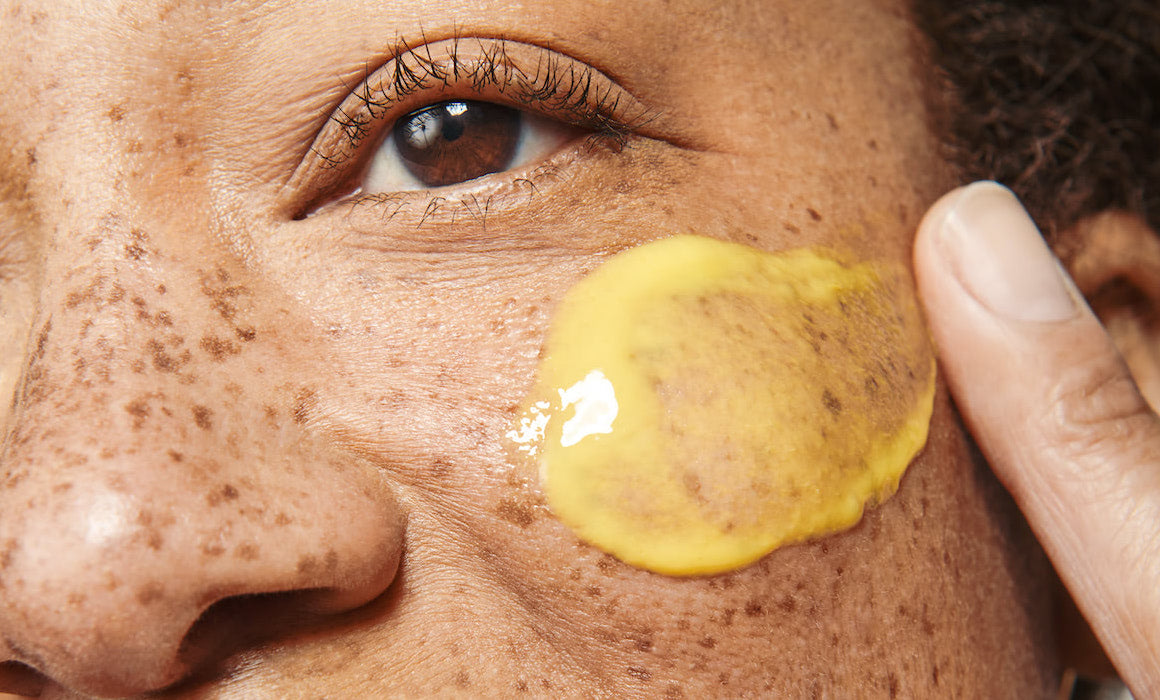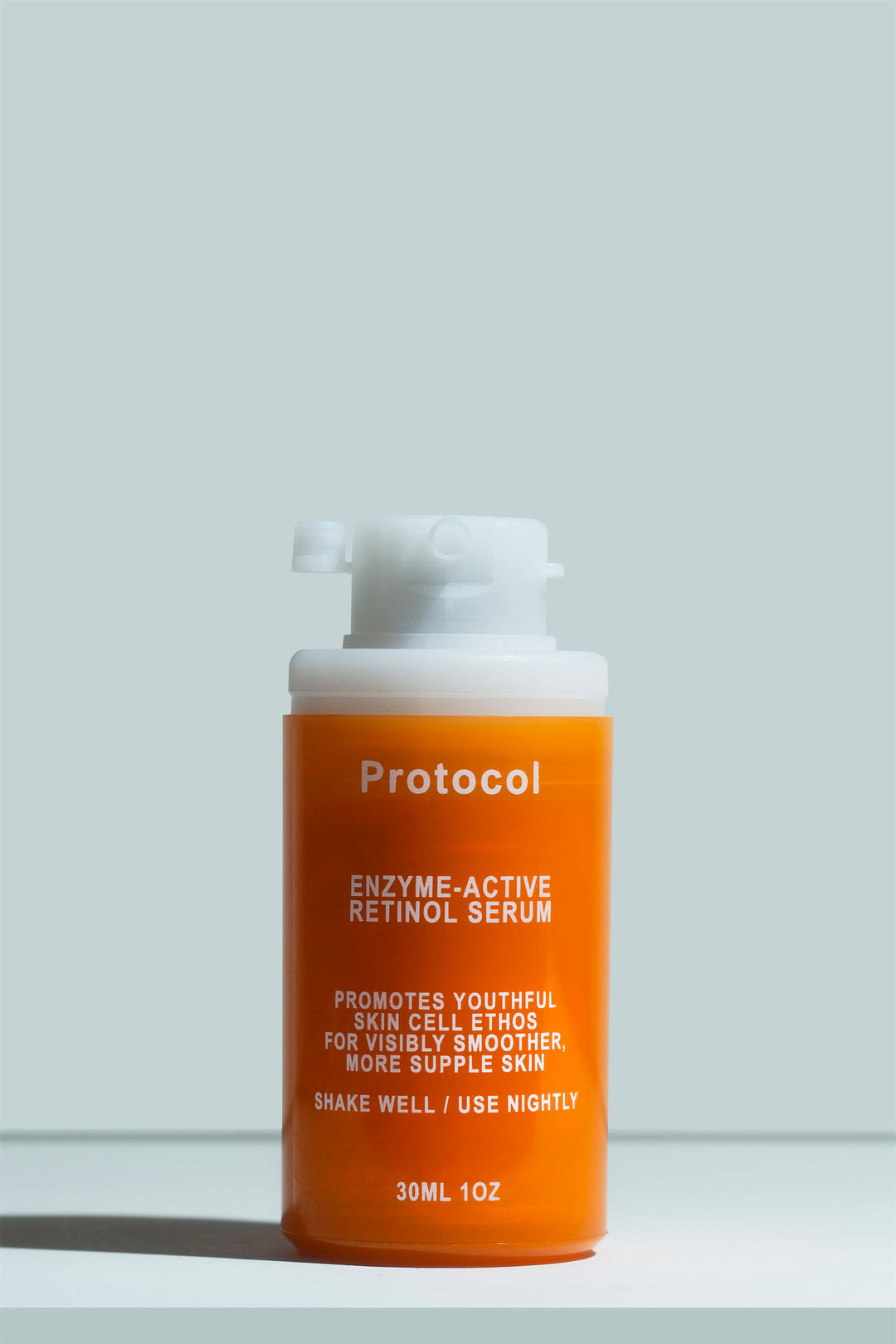How to Use Retinol Safely and Effectively


Retinol and its derivatives are nature's most powerful skin renewers! No other ingredient family can have a bigger impact on how your skin looks, feels, and behaves. This has been scientifically proven over and over in the last several decades. But, how do you even use retinol? How often should you use it, and where does it fit in your skincare routine?
We know incorporating a new (and potent) product into your skincare routine can be a bit intimidating, even when you already know a lot about skincare.
But there are a few key principles that can help you ensure that you get the best results you can out of the retinol product you choose.
How to use retinol
How you apply your retinol serum or cream can make all the difference in how effective and gentle it ends up being.
Learning to follow the steps is not too complicated, and you're going to love how your skin looks after a few weeks with a proper retinol serum!
Tips for using retinol
Before we get into the step-by-step guide, here are a few important tips on using retinol:
- Retinol is best used at night. Active forms of retinol are sensitive to light, so it's best to use retinol serums or creams at night.
- If you’re new to retinol or nervous about starting, it’s totally ok to start slow! Many of our clients start by applying retinol every other day or two to see how their skin responds. Your skin needs time to acclimate to any new ingredient and so taking a few weeks to ease in can help make that transition seamless.
- Prep with niacinamide. Niacinamide is a great ingredient to help smooth the transition period when starting retinol. That’s why our clinical-grade moisturizer is PACKED full of it.
- One active at a time. In general, we recommend using just one leave-on “active” per skincare session, along with a cleanser and moisturizer on either end. If you’re using proper, full-potency ingredients in your routine, you don’t want to dilute them with anything else. Many of our clients find that simply dropping steps from their routine puts their skin in a better state.
How to use retinol in your routine: step-by-step
And without further ado, here’s how to incorporate retinol into your nighttime routine.
Step 1: Cleanse
Remove your makeup and cleanse your face. It's important to use a gentle, purifying cleanser to prepare your skin to absorb all of the retinol. (Our cleanser with green tea extract and aloe was designed to pair perfectly with retinol serum.)
Step 2: Apply retinol
Next, you're ready to apply the retinol.
We recommend leaving your skin damp after washing your face, as this helps the retinol absorb into your skin. Spread the retinol evenly onto your skin, making sure to cover your forehead, nose, cheeks, and chin. You can also spread some onto your neck, and rub any leftovers into your hands.
Step 3: WAIT
For best results, don't moisturize immediately after applying retinol.
The best thing you can do is wait 30 minutes for it to fully absorb into your skin. However, if you're pressed for time, you should at least wait until the retinol is dry.
If you’re worried about irritation and want to intentionally reduce some of retinol’s effects, you can skip the wait-time and immediately layer your go-to moisturizer on top. This will help dilute it.
Step 4: Moisturize
Don't skip this step! It's important to moisturize with a high-quality moisturizer after you've let the retinol soak into your skin.
What even is retinol?
Retinol is a form of the commonly known nutrient vitamin A. It's the gold standard ingredient for addressing just about every skin concern you can think of: blemish and oil control, fading wrinkles and fine lines, smoothing texture, and even fading hyperpigmentation and dark spots.
It acts like a super-nutrient for your skin, boosting and fine-tuning dozens of important processes in your skin cells, rapidly renewing your skin in multiple ways at once.
Benefits of using retinol
It’s good to have a clear idea of why you want to add retinol to your beauty routine. These are its main cosmetic benefits.
- Smooth, youthful skin - Retinoids have the power to turn back time for your skin cells, restoring them to their more youthful state. When your skin cells renew at a faster rate, they can heal scarring, repair sun damage, discoloration, and sometimes even permanently reverse signs of aging.
- Purges impurities and shrinks pores - Retinoids can also unclog pores and reduce the appearance of pores, leaving you with smooth, even skin.
- Reduce breakouts - Retinoids help regulate oil production and unclog pores, to help speed the visible fading of breakouts and blemishes as well as keep the skin looking clear for the long term.
- Fades dark spots - This goes for dark spots and diffused pigmentation no matter its source, from marks left behind by acne to signs of photodamage.
Retinol FAQ
Still have some questions? Good thing we’ve got answers! When it comes to using retinol, these are the main questions that often come up.
What about all of my 7 other toners and serums and creams?
Our general philosophy is that the more products you use, the less effective your routine will be. You won’t hear other skincare companies say this but basic skincare routines are the best routines.
We strongly recommend using only ONE key active ingredient per skincare application session (your nighttime routine, morning routine, etc.). If you apply this single active ingredient to freshly cleansed, damp skin, you will give it the best chance of maximizing its efficacy. If you have more ingredients that you want to fit into your routine, consider adding them in the morning on alternating days.
How often should I use retinol?
How often you should use retinol truly depends on your skin's reaction to the product you're using and the quality of the retinol.
For example, our Enzyme-Active Retinol Serum contains retinal (yep, with the "a"), which is one of the gentlest forms of retinol you can use while still experiencing real results. You'll probably be able to use it daily within a shorter time period than with other products.
When using any retinol product, it can take a few weeks to adjust. The goal is to work up to daily use, however, it's important to pay attention to how your skin is reacting and take it at your own pace.
Here's a general guideline on when to use retinol:
- First two weeks - Use retinol every other night.
- Weeks 3-4 - Try using retinol for two nights on, then one night off to give your skin a bit of a breather.
- Weeks 4+ - If your skin is still doing great, try using retinol every night. If you ever start experiencing side effects, such as dryness, peeling, or irritated skin, it's completely fine to back off for a night or two and resume using retinol in a few days.
How often should I use retinol per year?
It's best to use retinol year-round, on a daily basis. However, if that isn't in your budget (or if you feel like you need a reset) you could incorporate two or three 60-day treatments throughout the year to maintain your skincare results.
Do I put retinol on before or after moisturizer?
You should apply retinol before your moisturizer. Once you've applied retinol, wait about 30 minutes for it to fully absorb into your skin. Then, you can moisturize!
That said, you can also intentionally dilute the retinol to minimize chances of irritation. This is called “sandwiching,” where you apply moisturizer both before and after. This slows the rate of penetration, but remember that it’ll also reduce efficacy.
For how long should I leave retinol on my face?
Since you'll be using it as part of your nightly skincare routine, you can leave it on all night while you sleep. In the morning, you don’t need to wash it off - you can just rinse your face with water, and do your morning routine.
Some people use retinol like a “mask” that they rinse off, but we don’t think it’s worth the hassle and reduction in effects.
What happens when I stop using retinol?
Retinol changes how your skin behaves on a cellular level. It sends signals to your skin that help boost collagen, regulate oil production, and keep everything in perfect balance. Without that retinoid telling your skin how to behave, your skin will eventually return to its previous functions.
You'll probably retain some of the results you got from using retinoids, like smoother, brighter skin and less prominent folds or wrinkles for a significant period of time, although you’ll need to continue using retinol again to maintain them for the long-term.
Should I put retinol under my eyes?
Retinol can be great for your under-eye area, as it helps reduce the look of fine lines and crow’s feet.
In general, retinol can be used under the eyes. However, you have to be careful and start slow. If any type of irritation occurs,retinol may not be appropriate for your eye area.
Can I use vitamin c with retinol?
You can absolutely use vitamin C with retinol! In fact, we highly recommend it for beautiful, clean skin. However, you have to use them both at the right times.
Different pH levels and general potency mean that using one after the other can compromise results while increasing the chances of irritation.
That's why we recommend you use vitamin C in the morning under sunscreen and retinol at night. This will keep them separate, and will also allow your vitamin C serum to give your skin a photoprotective boost.
Choosing a great retinol
If you’ve tried retinol before and haven't seen any results, it’s possible the products you used didn’t actually contain any retinol!
A lot of the products advertised as containing retinol or vitamin A run into one of three issues: They’re made with synthetic derivatives that have little-to-no data backing their efficacy; they’re made with retinol, but the amount is too low to have any impact; or, they’re packaged in a way that lets both air and light get inside which destroys the retinol.
When creating our Enzyme-Activated Retinol Serum, we took three measures to ensure not just that it’ll work, but that it’ll surpass all other cosmetic retinol products for stability, gentleness, and efficacy.
1) We made sure to use a clinically effective form of retinol. We actually opted to use retinal, which is what retinol converts into once it’s applied to the skin. You can read our post about what retinol is to learn more about the difference.
2) We made sure to use enough of it. Since retinal is so potent, 0.1% is enough to be clinically effective without irritating the skin. Retinol undergoes more conversions, so the skin can tolerate it at higher concentrations, so look for formulas with 0.3% to 1%. If a brand does not disclose the percentage, avoid it altogether.
3) We bottled it in a bottle that protects it completely from air and light, to keep it from degrading. This also helps our retinol retain its vivid yellow color, which is another sure sign of freshness and effectiveness.
Pick it up if you're ready to try a real, active retinol.





